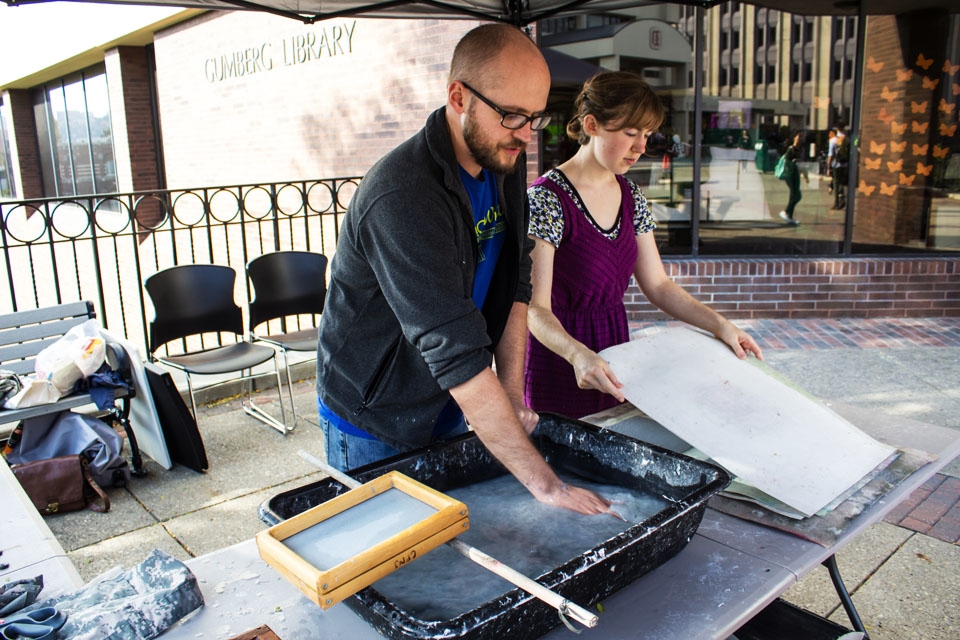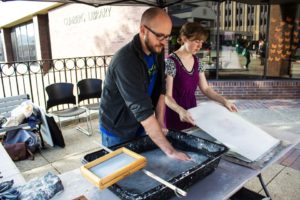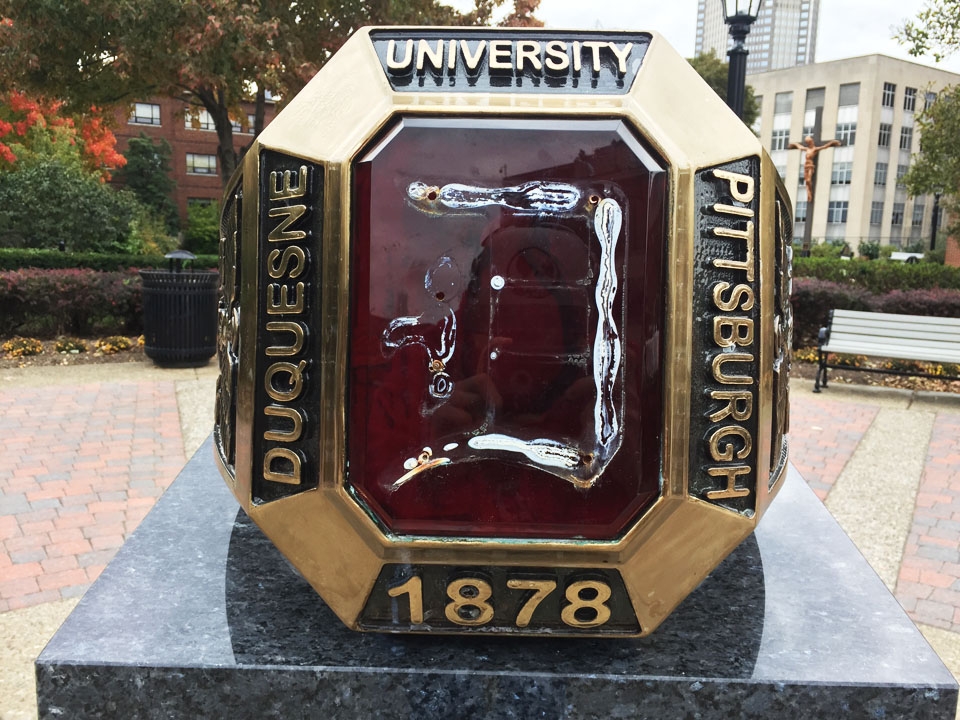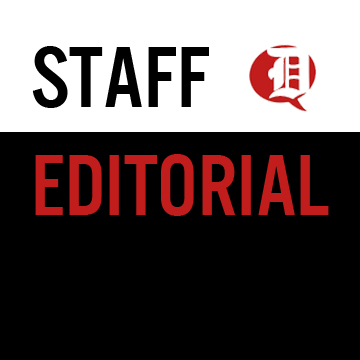

Combat Paper NJ coordinator Kevin Basl makes the form of recycled paper at the event on Nov. 2.
Megan Garrett | Staff Writer
Paper is often made from recycled materials. This past week, an event at Duquesne made a special kind of paper out of a recycled material you might not expect — old military uniforms.
On Nov. 2nd, the Gumberg Library hosted a Combat Paper Workshop on the library’s patio as a part of its “Beyond All Repair” exhibit, which looks at the effect of war on individuals. Participants learned how to make a recycled form of “combat paper” out of old military uniforms.
The event is the work of the travelling art group Combat Paper NJ, based out of Branchburg, New Jersey. The group uses the art of making handmade paper to help veterans share their stories, according to Kevin Basl, a program coordinator at Combat Paper NJ, who oversaw the event Wednesday.
“It is metaphorical,” Basl said. “[Veterans] are tearing into the seams of their memories as they tear the seams of their old uniforms.”
Christie Kliewer, Duquesne’s outreach and communications librarian, said several campus constituents, including the Office of Military and Veterans Affairs, invited Combat Paper to Duquesne as a part of the “Beyond All Repair” exhibit which is on display through Nov. 11.
Basl explained the paper-making process dates back to 105 A.D. China. The creation of the paper is a multistep process. The uniform is torn and made into a pulp, where it is mixed into a trough of water. The pulp then gets strained out and placed in between mats to dry.
Basl studied journalism at Penn State and served in the United States Army for five years, including two tours in Iraq. He then returned to college to pursue literature and philosophy.
Rich Weaver, a current Duquesne graduate student, heard about the combat paper workshop through his wife, who is a veteran herself.
“It’s pretty cool,” Weaver said, about combat paper. “It is a great tool for recycling uniforms and rehabilitating veterans.”




